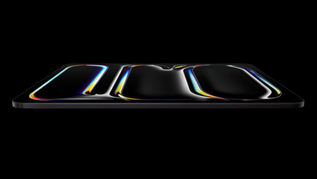iPhone 17 Air might miss out on 120Hz ProMotion display
- The Apple Square

- Jun 3
- 2 min read

As Apple inches closer to the iPhone 17’s expected September debut, a wave of conflicting reports has reignited debate over whether the non-Pro iPhones will finally gain ProMotion — Apple’s dynamic refresh rate technology — or settle for a simpler high-refresh panel.
The spotlight is currently on the new iPhone 17 Air, which is anticipated to replace the Plus variant with a thinner and more lightweight design. Hype has been steadily building around whether Apple will finally bring a higher refresh rate experience to its mainstream models. Earlier reports, including those from display supply chain insiders like Ross Young, pointed to Apple expanding its use of LTPO technology — the backbone of ProMotion — across the full iPhone 17 lineup. Young’s comments were later echoed by Korean industry sources, adding credibility to expectations of more sophisticated display capabilities becoming standard.
However, those hopes are now facing scrutiny. A Chinese leaker known as Fixed Focus Digital claims that Apple’s next regular iPhone models — including the 17 Air — will feature standard 120Hz panels, not the adaptive ProMotion variant found on Pro devices since 2021. If accurate, the base iPhone 17 models may use traditional LTPS panels with a fixed refresh rate, which offer a smoother experience than 60Hz but lack the efficiency and dynamic scaling ProMotion is known for.
Fixed Focus Digital has been both right and wrong in the past, calling some key design features before their reveal — such as the iPhone 16E naming and the Desert Titanium color — but missing the mark on others, like iPhone 16 color options. Given this track record, the rumor has sparked skepticism among many in the Apple community.
ProMotion, first introduced on the iPhone 13 Pro series, allows iPhones to intelligently scale refresh rates from as low as 1Hz to 120Hz depending on the task, helping preserve battery life while delivering fluid scrolling and animations. A fixed 120Hz screen, while still responsive in use, draws more power, especially during passive viewing, and is not compatible with features like the always-on display — something Apple has limited to its LTPO-equipped models.
Apple has been gradually lowering the barrier between Pro and standard iPhones in recent years — from design cues to camera technology. Whether 2025 is the year ProMotion truly becomes mainstream remains uncertain. With the iPhone 17 series expected to bring notable changes — including design refinements, upgraded chips, and possibly a new ultra-thin model — the nature of its display technology could influence buying decisions for users who’ve long waited for smoother visuals without paying a premium.
Until Apple officially unveils the lineup, questions about which iPhones will benefit from its most advanced screen technology will likely continue to divide opinions and fuel speculation.






